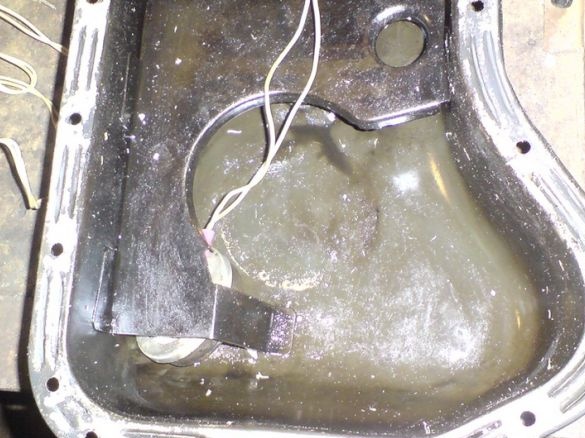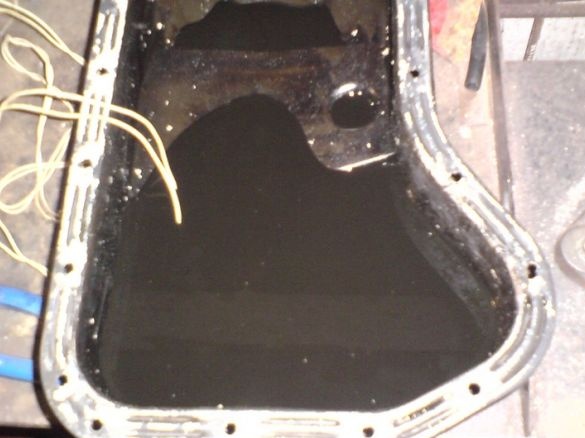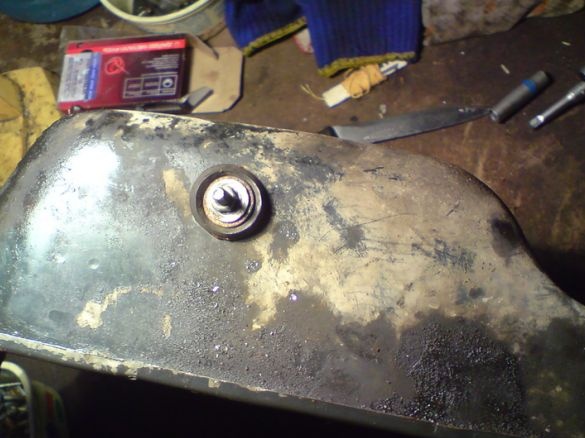
With the advent of cold weather, many motorists are faced with such a problem as difficulties in starting the engine. The thing is that in severe frosts the oil becomes very thick and it is difficult for the starter to spin up the engine so that it starts up. The battery and starter also suffer from this. Among other things, a thick oil at engine start-up forms a very high pressure in the lubrication system, which also negatively affects the engine resource. Well, of course, the effectiveness of the lubricant in this case also decreases.
For those who like to add something to their auto, it will be useful to equip it with such a simple system for heating oil. Everything is done easily and simply, this greatly facilitates the life of the driver.
Materials and tools for finalizing a car:
- a device for vulcanizing chambers (will work as a heating element);
- wires;
- a bolt with a nut and two washers;
- a piece of gum or rubber washers;
- drill and drill (drill bit slightly larger than the diameter of the bolt);
- sealant (for installation of the pallet);
- wrenches, etc.
The installation process of the heating element:
Step one. Install the heating element
As a heating element, the author used a device with which cameras are vulcanized. Its power is 42 W, that is, the current consumption is 3.2 A. You can use another heating element similar in power. The heating element must be installed at the lowest point of the sump so that the oil warms up evenly and completely.
The author installed it under the oil damper, he entered it tightly, and there was no need to fix it additionally
Step Two Device testing
Now, to understand how long it takes to warm the oil before starting the engine, homemade can be tested. To do this, oil is poured into the pan, and the heater is connected to the battery. When the temperature is -7 degrees, the top layer of oil warmed up to 11 degrees in 10 minutes, and the bottom and middle to +4.
After 20 minutes of heating, the temperature of the upper oil layer was already +16 degrees, the lower layer +7, and the average +10.
Well, after half an hour of heating, the temperature of the upper layer of oil was +28 degrees, the average +21, and the bottom +11.
At this, the author stopped measuring, since it was already clearly visible that the oil warms up perfectly. Measurements were made in the area of oil intake by an oil pump.Near the heating element, the temperature was stably kept in the region of +42 degrees.
Step Three The final stage. Connection
The heating element has two terminals, one wire must be connected to ground, that is, screwed under the nut on the pallet. It is important to make good contact, as the oil does not conduct current. To connect the second wire in the pan, you need to drill a hole. A bolt is inserted into it, on which heat-shrinkage or another tube that does not conduct current is previously put on.
Rubber washers must be placed under the cap of the bolt and nut. In other words, the bolt must not be in contact with the pallet body. Well, now, on the one hand, the second wire from the heater is screwed on, and on the other hand, you need to connect the plus from the battery.
After that, the homemade product will be ready. How to connect it further, everyone decides for himself. Ideally, everything can be connected through a special relay that would maintain the oil temperature at a certain level. Or you can just turn on the heater half an hour before starting the engine. Of course, it is desirable to connect everything through a fuse.
As for the load, it is small here, it is only 3.5 A, with such a load, a working battery can work for about two days. For more efficient heating, you can put two such heaters or one more powerful. And best of all, when the oil is warming up, the coolant is also heated at the same time. With this approach, the engine will start perfectly in cold weather even with mineral oil.





